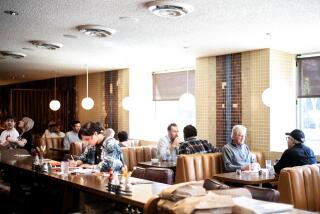Choosing a material that works for you
The toughest part of the kitchen counter decision may be figuring out what you care about most. Durability? A unique look? Color? Price? Here’s a look at some of the most common options, with an assessment of their quality from designers, manufacturers and the website www.kitchen.com.
Concrete
Pros: Modern, industrial look. Can be made in any shape and in a variety of colors.
Cons: Can stain and crack, though that also may be an appeal. Relatively expensive. May need a sealer and wax applied periodically to protect against staining.
Granite
Pros: Huge range of colors and prices. Durable. Stain- and heat-resistant, though some sealers commonly used to combat its porous qualities can be damaged by excessive heat.
Cons: Some designers say it has become overused.
Tile
Pros: Budget-friendly. Unlimited color and pattern choices. Durable, heat- and stain-resistant.
Cons: Grout can stain and be tough to clean. Not a smooth surface for some cooking tasks.
Glass
Pros: Looks new and modern. Can be made in many colors, patterns and shapes. Translucent qualities enable natural light to pass through. Nonporous, heat-resistant, easy to clean. Can be made from recycled glass.
Cons: Shows fingerprints. Can crack or break.
Marble
Pros: Classic looks. Sometimes has translucent quality. Great for making and rolling pastry dough because it’s cool to the touch.
Cons: Can stain.
Laminates
Pros: Huge range of colors, patterns and finishes. Budget-friendly. Easy to maintain.
Cons: Chips can be difficult to repair.
Engineered quartz
Pros: Extremely tough. Dozens of colors and patterns. Easy to clean. Consistent color and detail. Many manufacturers, including CaesarStone, Silestone, Cambria. Considered more sustainable, as remnants often can be recycled.
Cons: Lacks unique colorations and details found in marble or granite.
Stainless steel
Pros: Durable. Stain-resistant. Looks like a professional kitchen. Other metals, such as zinc and copper, lend an unusual appearance that will change over time.
Cons: Can show fingerprints and scratch.
Wood
Pros: Can be used as a chopping board.
Cons: Shows knife marks. Susceptible to water damage. Requires periodic reoiling.
Other natural stone
Pros: Slate, soapstone, quartzite, lava stone and others can provide a variety of looks. Soapstone gives a traditional farmhouse appeal, while lava stone is as modern as can be. Some can be made into sinks as well.
Cons: Depending on the rarity, it can be expensive.
Solid surfaces
Pros: Products such as Corian come in a variety of shapes, colors and finishes. Non-porous, low-maintenance. Can be made into a seamless piece.
Cons: Can be stained or scratched, though marks can be repaired, sometimes with just an abrasive cleaner.
-- Mary MacVean
More to Read
Eat your way across L.A.
Get our weekly Tasting Notes newsletter for reviews, news and more.
You may occasionally receive promotional content from the Los Angeles Times.







